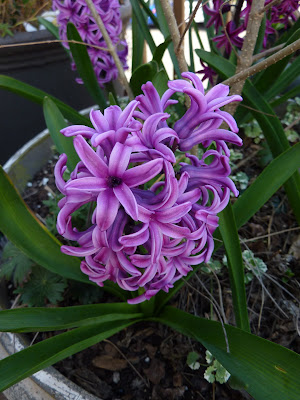 |
| Closeup of Eucalyptus "Silver Dollar" |
Well, not real money. This is Eucalyptus "Silver Dollar" and it actually does grow as big as a tree, if you let it (and if you live in a warm enough climate--which I don't).
Silver Dollar is an annual in my zone but it can be overwintered indoors (I haven't tried it yet). It's native to Australia and likes part shade to full sun. It is drought tolerant, in fact, take care not to over water it or you'll end up with an unpleasant case of root rot. Mine was a little slow to get going in my pot but once it did, it grew fast. It's branched out all over the place and is about 3 feet high now. In tree form, it can grow as tall as 50 feet and as wide as 40 feet.
This eucalyptus is very fragrant and the oil in the leaves repels insects. That alone is reason enough to have one in my garden every year.
 |
| Eucalyptus "Silver Dollar" |
Bookshelf: Container Gardening Books





































